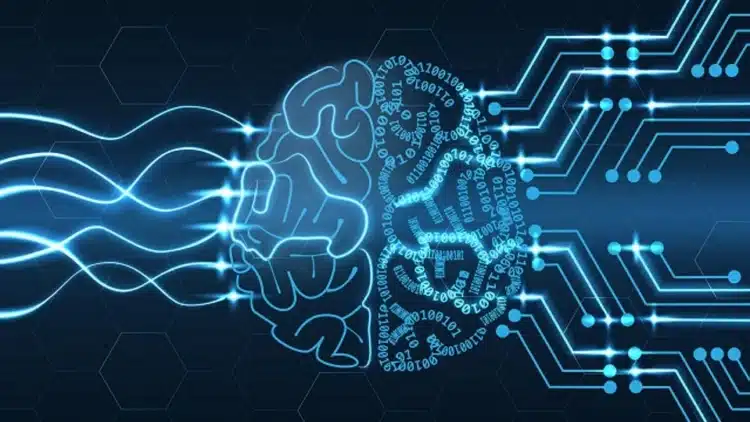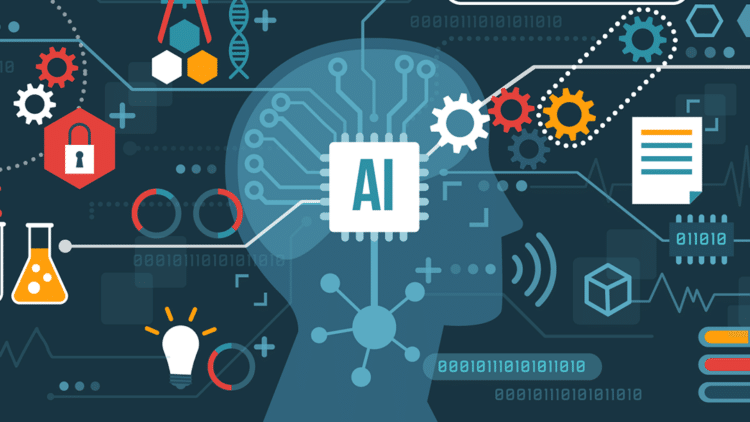As someone who’s spent countless nights debugging code, I’ve always dreamed of a more intuitive way to build software. The future I’m about to describe isn’t just exciting – it’s inevitable, and it’s already starting to take shape in my daily workflow.
Introduction to Vibe Coding
The programming world is undergoing a fundamental shift. What I call “Vibe Coding” represents the convergence of artificial intelligence and speech recognition to create a more natural, efficient, and enjoyable development experience. Gone are the days of painstakingly typing every line of code. Instead, we’re entering an era where developers become architects, communicating intent that AI helps transform into functioning software.
This evolution isn’t just about convenience – it’s about unlocking human creativity by removing the tedious aspects of coding that have always gotten in the way of pure creation. When developers can focus on the “what” rather than the “how”, entirely new approaches to problem-solving emerge.
The Current State of AI-Assisted Development
Today’s AI coding tools already demonstrate impressive capabilities that were science fiction just a few years ago. Let me share some of the leading technologies reshaping my daily workflow:
| Tool | Key Features | My Experience |
|---|---|---|
| GitHub Copilot | Code completion, full function generation, natural language prompts | Reduced boilerplate writing by ~40% |
| Cursor | AI-integrated editor with contextual understanding | Amazing for refactoring complex legacy code |
| Claude’s Code Interpreter | Natural language to code generation with debugging | Life-changing for data analysis tasks |
| Codeium | Free alternative with multi-language support | Solid everyday assistant for quick suggestions |
| Tabnine | Self-hostable for privacy-conscious teams | Great for proprietary codebases |
While these tools have dramatically improved my productivity, they still primarily rely on text-based interfaces. This is where the voice dimension comes in.
Voice + AI: The Missing Ingredient
After experimenting with voice coding for the past few months, I’ve become convinced it’s the natural extension of AI programming assistants. Here’s why:
Speed and Ergonomics
Speaking is approximately 3x faster than typing for most people. When I pair voice dictation with AI code generation, I can express complex ideas quickly without the physical constraints of typing. This advantage becomes particularly pronounced when implementing significant features or systems where the conceptual framework is clear but implementation would typically require substantial typing.
For example, creating a comprehensive user authentication system—complete with registration, login, password reset, and account verification—can be described verbally in under a minute. The resulting implementation, which might normally take hours to type out, materializes in seconds through AI translation of your spoken intent.
Reduced Cognitive Load
When I’m deep in problem-solving mode, switching contexts to type commands interrupts my flow. Speaking feels more natural and keeps me in the creative zone. This psychological aspect shouldn’t be underestimated—maintaining deep focus is one of the most valuable yet fragile states for a developer.
Cognitive science research shows that task-switching, even between coding and typing instructions about coding, creates a mental tax that accumulates throughout the day. Voice interaction minimizes this tax, allowing longer periods of sustained creative problem-solving.
Accessibility
Voice interfaces make programming more accessible to people with mobility impairments or repetitive strain injuries. This inclusivity aspect is personally important to me—after a wrist injury last year, voice coding allowed me to continue working without pain.
The technology also opens doors for visually impaired developers who can leverage the combination of voice input and audio feedback systems. As these tools mature, we’re likely to see programming become accessible to entirely new demographics who were previously excluded from the field.
Historical Context – The Evolution of Programming Interfaces
To appreciate where we’re heading, it’s worth considering how programming interfaces have evolved:
- Physical Hardware (1940s-50s): Programming via physical switches and punch cards
- Command Line (1960s-70s): Text-based interfaces requiring precise syntax
- IDEs & Visual Programming (1980s-2010s): Tools that added abstraction layers and visual helpers
- AI-Assisted Coding (2010s-Present): Intelligent completion and suggestion systems
- Vibe Coding (Emerging): Conversational, intent-based programming through natural language
Each transition has moved us further from machine-oriented syntax toward human-oriented expression. Vibe Coding represents the next logical step in this progression—shifting from “writing instructions for machines” to “explaining what you want to accomplish.”
The Developer as Architect – A Paradigm Shift
The most profound change in Vibe Coding isn’t just the interface—it’s how it transforms the role of the developer.
From Syntax to Strategy
When I first started programming 15 years ago, memorizing syntax and language quirks was essential. Today, with AI handling implementation details, I find myself focusing on:
- System design and architecture
- User experience planning
- Performance optimization strategy
- Business logic and requirements analysis
- Security considerations and threat modeling
- Observability and monitoring approaches
My conversations with the computer have evolved from “here’s exactly how to do this” to “here’s what I want to achieve.”
The Changing Value Proposition of a Developer
This shift has significant implications for how developers provide value. Junior developers, traditionally tasked with implementing predefined features according to specific instructions, now find AI can handle much of this work. Instead, even early-career developers need to develop skills in:
- Evaluating AI-generated code for correctness and security
- Understanding architectural trade-offs and making informed decisions
- Communicating precisely about technical requirements and constraints
- Debugging complex, integrated systems rather than line-by-line coding issues
For senior developers, the value increasingly comes from architecting robust systems at scale and guiding AI tools to generate optimal implementations aligned with business requirements.
Real-World Example – Building a Feature with Vibe Coding
Let me walk through how I recently built a notification system using this approach:
- Initial Concept (Voice): “I need a notification system that supports email, SMS, and in-app notifications with templating capabilities and delivery confirmation.”
- Architecture Planning (Voice + AI): “Generate a system diagram for a notification service with these requirements. Include message queue for reliability.”
- Component Creation (Voice + AI): “Create a notification factory class that supports different channels with a common interface.”
- Implementation Refinement (Voice + AI): “Let’s implement the email provider first. Use AWS SES, handle rate limiting, and include retry logic.”
- Testing Strategy (Voice + AI): “Generate unit tests for the notification factory focusing on the retry mechanism.”
The entire process was conversational, with me reviewing, adjusting, and directing rather than manually implementing each piece.
Industry Impact and Market Adoption
The shift toward Vibe Coding is already influencing the broader technology industry:
Enterprise Adoption Patterns
Large enterprises, initially hesitant about AI coding tools due to security and intellectual property concerns, are now developing governance frameworks to safely incorporate these technologies. Companies like Microsoft, Amazon, and Google have introduced enterprise versions of coding assistants with:
- Private cloud deployments for sensitive codebases
- Audit logs for AI-assisted code generation
- Integration with existing security scanning pipelines
- Role-based access controls for different AI capabilities
Financial and healthcare organizations, traditionally conservative in adopting new development technologies, are running controlled pilots with these enterprise offerings.
Startup Ecosystem Response
The venture capital ecosystem has recognized this shift, with over $2 billion invested in AI coding assistance startups since 2021. New entrants are focusing on specialized niches:
- Domain-specific coding assistants for fields like bioinformatics or financial services
- Secure AI pair programmers for regulated industries
- Collaborative AI coding platforms for distributed teams
- Voice-first development environments built from the ground up
These startups are racing to capture market share as the development paradigm evolves, similar to how IDEs competed for dominance in previous transitions.
Educational Implications
The rise of Vibe Coding raises important questions about how we teach programming:
Computer Science Curriculum Evolution
Universities and coding bootcamps are grappling with how to adapt curricula for an AI-assisted future. Some schools have already begun:
- Stanford introducing AI-Augmented Programming Courses
- MIT incorporating prompt engineering into their computer science program
- Bootcamps like General Assembly offering specialized “AI-Native Development” tracks
The fundamental question is what foundational knowledge remains essential when implementation details can be delegated to AI.
The New Essential Skills
The consensus emerging among educational institutions is that these skills remain critical:
- Algorithmic thinking: Understanding computational complexity and efficiency
- Data structures: Knowing when and why to use specific organizations of data
- Systems design: Architecting robust, scalable solutions
- Testing methodology: Ensuring correctness through systematic validation
- Security fundamentals: Identifying and mitigating potential vulnerabilities
- AI collaboration: Effectively communicating with and directing AI assistants
This last skill—effectively partnering with AI—is entirely new but increasingly viewed as fundamental as traditional coding skills once were.
Practical Tools for Vibe Coding Today
While the full vision of Vibe Coding is still emerging, you can start incorporating elements into your workflow now:
Voice Dictation Options
- Professional: Dragon Professional Individual (what I use)
- Built-in: Windows Speech Recognition or macOS Dictation
- Cloud-based: Google Speech-to-Text API
- Open Source: Mozilla DeepSpeech or Whisper models
AI Coding Assistants with Good Voice Integration
- Talon Voice + GitHub Copilot
- VS Code with Voice Control extension and Cursor
- JetBrains IDEs with Voice Code plugin
- Serenade.ai purpose-built for voice coding
My Current Setup
My workflow combines multiple technologies to create a seamless experience:
Voice input (Wispr) captures my spoken commands and code descriptions. The processed commands interact with Cursor, while Claude Code Assistant helps translate my intentions into functional code.
This setup allows me to speak naturally about what I want to accomplish, review the generated code, and iteratively refine it—all with minimal typing.
Challenges and Limitations
Despite my enthusiasm, I recognize several obstacles to widespread adoption:
Technical Challenges
- Voice recognition accuracy in noisy environments like open offices
- Handling complex code visualization verbally without visual aids
- IDE integration standardization across different development environments
- Multi-language context switching when projects use multiple technologies
- Security and intellectual property concerns with cloud-based AI services
Cultural Resistance
Many experienced developers (myself included initially) may resist this shift, viewing “real programming” as writing code manually. This mindset will gradually change as the productivity benefits become impossible to ignore.
Some development teams also worry about the potential loss of deep technical knowledge when implementation details are increasingly abstracted away. This concern echoes similar objections raised during previous transitions:
- “Real programmers use assembly, not these high-level languages”
- “Using IDEs will make developers forget how to use the command line”
- “Copy-pasting from Stack Overflow isn’t real programming”
History suggests that each abstraction layer ultimately allows developers to focus on more complex problems rather than diminishing technical capability.
Learning Curve
Effective voice coding requires learning new patterns of expression. It took me several weeks to become fluent in describing code vocally rather than thinking in terms of typing it.
Organizations adopting these approaches need to budget for:
- Training time for developers to become comfortable with voice interfaces
- Development of team-specific command vocabularies
- Integration with existing processes and workflows
- Documentation of best practices specific to their technology stack
The Future Workplace: Vibing with Your Code
Looking 5-10 years ahead, I envision development environments that:
- Understand context deeply: Systems that follow your coding patterns and project structure to generate highly relevant code
- Offer multi-modal interaction: Seamlessly blend voice, typing, gestures, and even eye tracking
- Provide ambient assistance: Listen passively for questions or commands while you work on other aspects
- Enable collaborative co-creation: Multiple developers verbally collaborating with the same AI system simultaneously
- Incorporate augmented reality: Visualizing complex systems in 3D space while vocally manipulating them
- Adapt to personal preferences: Learning your specific coding style, terminology, and workflow patterns
Beyond Text-Based Programming
Perhaps most radically, Vibe Coding points toward a future where traditional text-based programming languages may become less central. Already, we’re seeing experiments with:
- Visual programming systems guided by voice
- Direct manipulation of data flows through gesture and speech
- Natural language programming that compiles directly to machine code
- Neural-symbolic systems that blend formal logic with natural language understanding
These approaches may eventually free development from the constraints of text-based languages altogether, much as graphical user interfaces freed computer users from command-line interfaces.
Ethical Considerations
The transition to Vibe Coding raises important ethical questions:
Intellectual Property and Attribution
When code is generated through a conversation between human and AI, questions arise about:
- Who owns the resulting intellectual property?
- How do we attribute contributions properly?
- What constitutes original work in an AI-assisted environment?
Organizations need clear policies addressing these issues as AI assistance becomes more sophisticated.
Knowledge Preservation
As implementation details are increasingly delegated to AI systems, we risk losing deeper understanding of how technologies work. This creates potential vulnerabilities:
- Overreliance on AI systems that may perpetuate problematic coding patterns
- Difficulty debugging issues that require low-level understanding
- Security vulnerabilities that emerge from blindly trusting generated code
Maintaining human expertise in fundamental areas remains essential even as we embrace assistance for routine tasks.
Preparing for the Vibe Coding Future
How can you position yourself for this shift? Here’s my advice:
Focus on Strengthening These Skills:
- Systems thinking and architecture design
- Clear communication of technical requirements
- Evaluation and validation of generated code
- Testing strategy and quality assurance
- Security analysis and threat modeling
- Understanding business domains deeply
- Cross-functional collaboration with non-technical stakeholders
Start Experimenting Now:
- Try dictating pseudocode before implementing features
- Practice explaining your code verbally to reinforce understanding
- Use AI assistants for routine tasks to identify patterns
- Document your findings and refine your personal workflow
- Contribute to open-source projects
- Develop custom voice commands for your specific development needs
- Start building your own prompt library for common programming tasks
Organizational Preparation:
If you’re in a leadership position, consider these steps to prepare your team:
- Establish ethical guidelines for AI tool usage
- Create governance frameworks for AI-generated code review
- Develop training programs for effective human-AI collaboration
- Update hiring criteria to emphasize architectural thinking and communication
- Build knowledge-sharing systems to preserve deep technical understanding
Final Thoughts
Vibe Coding represents more than just a new tool or technique. It’s a fundamental evolution in how humans interact with computers to create software. The combination of AI and automatic speech recognition technology removes layers of translation between our intent and functioning code.
As someone who’s watched the industry transform multiple times, I’m particularly excited about this shift. It promises to make programming more accessible, more efficient, and more human. The mental overhead of syntax and boilerplate code has always been a barrier between pure creativity and implementation. Vibe Coding breaks down that wall.
What’s most exciting isn’t just the productivity gains—though they’re substantial—but how this shift might fundamentally change who can become a developer and what they can create. When the mechanical aspects of programming recede into the background, the creative and problem-solving aspects take center stage. This could usher in a new renaissance of software creation by dramatically expanding who can participate in building the digital future.
I’d love to hear your thoughts and experiences with AI and voice in your development workflow. Have you tried any of these approaches? What worked? What didn’t? Let me know in the comments below.
Until next time, happy vibing with your code!






